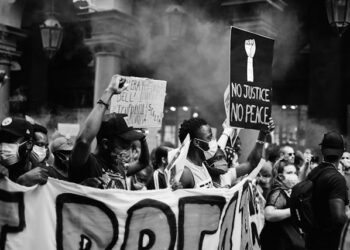Explore the iconic Jet magazine covers of the 1970s that celebrated Black culture, achievements, and milestones in a transformative era.
The 1970s was a defining decade for Black culture, and Jet magazine stood at the forefront of that revolution. More than just a publication, Jet was a platform—a mirror reflecting the hopes, struggles, and triumphs of Black America. From civil rights leaders to groundbreaking entertainers, its covers provided a vibrant canvas for the stories that mattered most.
Jet wasn’t just a magazine; it was a cultural touchstone, an archive of excellence, and a celebration of the unapologetically Black experience. Let’s explore how the magazine covers of this era captured the essence of a community in motion.
What You'll Discover:
What Made Jet Magazine Covers So Special?
Jet’s covers were more than aesthetically pleasing—they were purposeful. Here’s why they stood out:
- Spotlight on Black Excellence: The covers featured trailblazers in entertainment, sports, politics, and business. These weren’t just famous faces; they were symbols of progress.
- Bold Visuals: From afros to bell-bottoms, the fashion statements on Jet’s covers mirrored the vibrant styles of the 70s.
- Timely Topics: Jet addressed real issues. Its covers highlighted the civil rights movement, economic empowerment, and cultural pride.
Iconic Jet Covers That Defined the 1970s
The Civil Rights Movement’s Lasting Influence
In the wake of the 60s, the 70s saw a shift in the civil rights conversation. Jet covers frequently featured leaders like Jesse Jackson and Coretta Scott King, reminding readers of the ongoing struggle for equality.
- March on Washington’s Legacy: A 1973 cover revisited the impact of the March on Washington, underscoring the work left to be done.
- Angela Davis and Activism: The magazine highlighted Davis’s activism, balancing her intellectual prowess with her impact on social justice movements.
The Rise of Black Hollywood
The 70s marked the emergence of a new wave of Black entertainers, and Jet gave them the spotlight they deserved.
- Pam Grier’s Star Power: As a leading lady in Blaxploitation films, Grier’s covers exuded strength and beauty, redefining how Black women were portrayed in media.
- Richard Pryor’s Humor and Truth: Pryor’s appearances reflected his influence as a comedian who wasn’t afraid to address uncomfortable truths about race and society.
Fashion and Style: A Snapshot of the 70s
Jet covers were a masterclass in 70s fashion. From bold patterns to iconic hairstyles, they captured the essence of the era.
- The Afro: This wasn’t just a hairstyle; it was a statement of pride and identity. Jet covers showcased stars like Cicely Tyson, whose natural hair became a cultural symbol.
- Disco Fever: Bell-bottoms, platform shoes, and sequins graced the covers, proving that Black style was innovative and trendsetting.
How Jet Elevated Black Athletes
The 70s was a golden era for Black athletes, and Jet was there to document it all.
- Muhammad Ali’s Legacy: Ali appeared on multiple covers, not just for his boxing triumphs but for his activism and charisma.
- The Olympic Spotlight: Jet highlighted the achievements of track stars and basketball legends, ensuring that their contributions weren’t overlooked by mainstream media.
Why Jet Magazine Covers Still Resonate
Jet covers from the 1970s remain iconic because they captured moments that mattered—moments that shaped Black identity and pride.
- Representation Matters: For many readers, seeing people who looked like them on a magazine cover was empowering.
- A Time Capsule: The covers are a visual history of Black culture, documenting everything from political milestones to pop culture phenomena.
Key Takings
- Jet magazine covers of the 1970s were a powerful platform for showcasing Black excellence and addressing critical issues.
- The publication celebrated Black culture through bold visuals, timely topics, and iconic personalities.
- These covers served as a visual archive of the civil rights movement’s evolution, the rise of Black Hollywood, and the achievements of Black athletes.
- Fashion, style, and identity were central themes, making each cover a statement of pride and empowerment.





